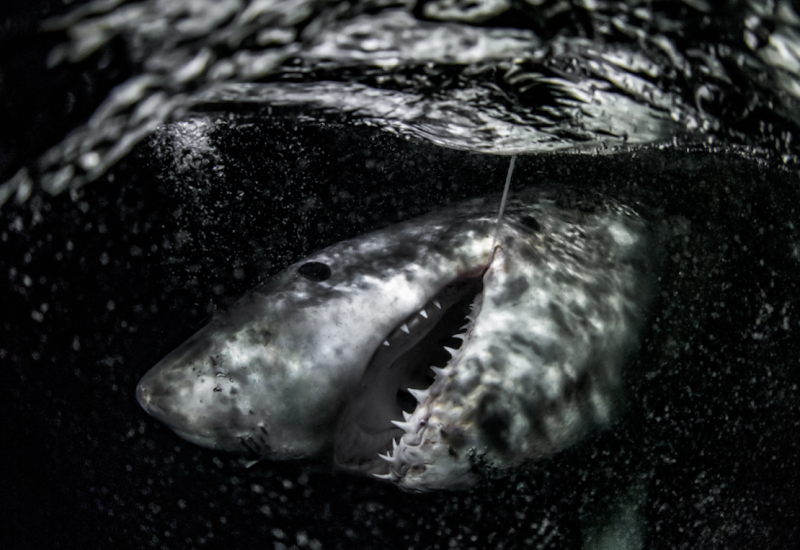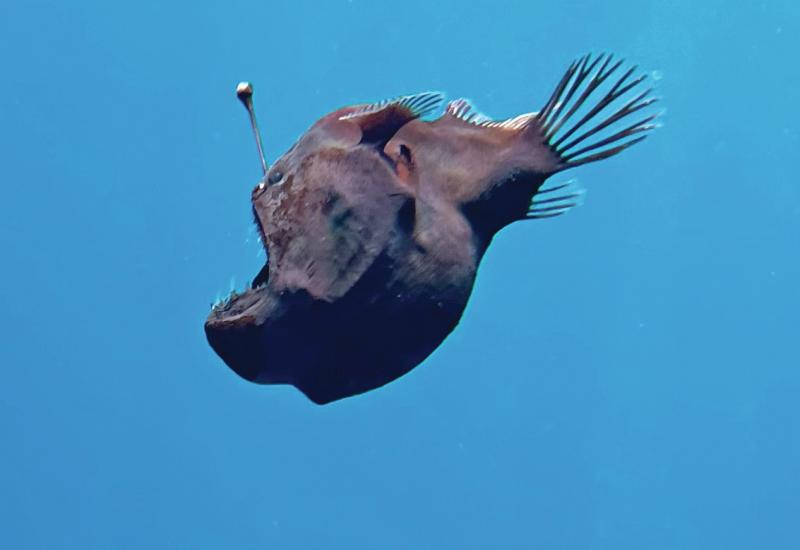Sea Creatures: The Venomous Blue Ring Octopus
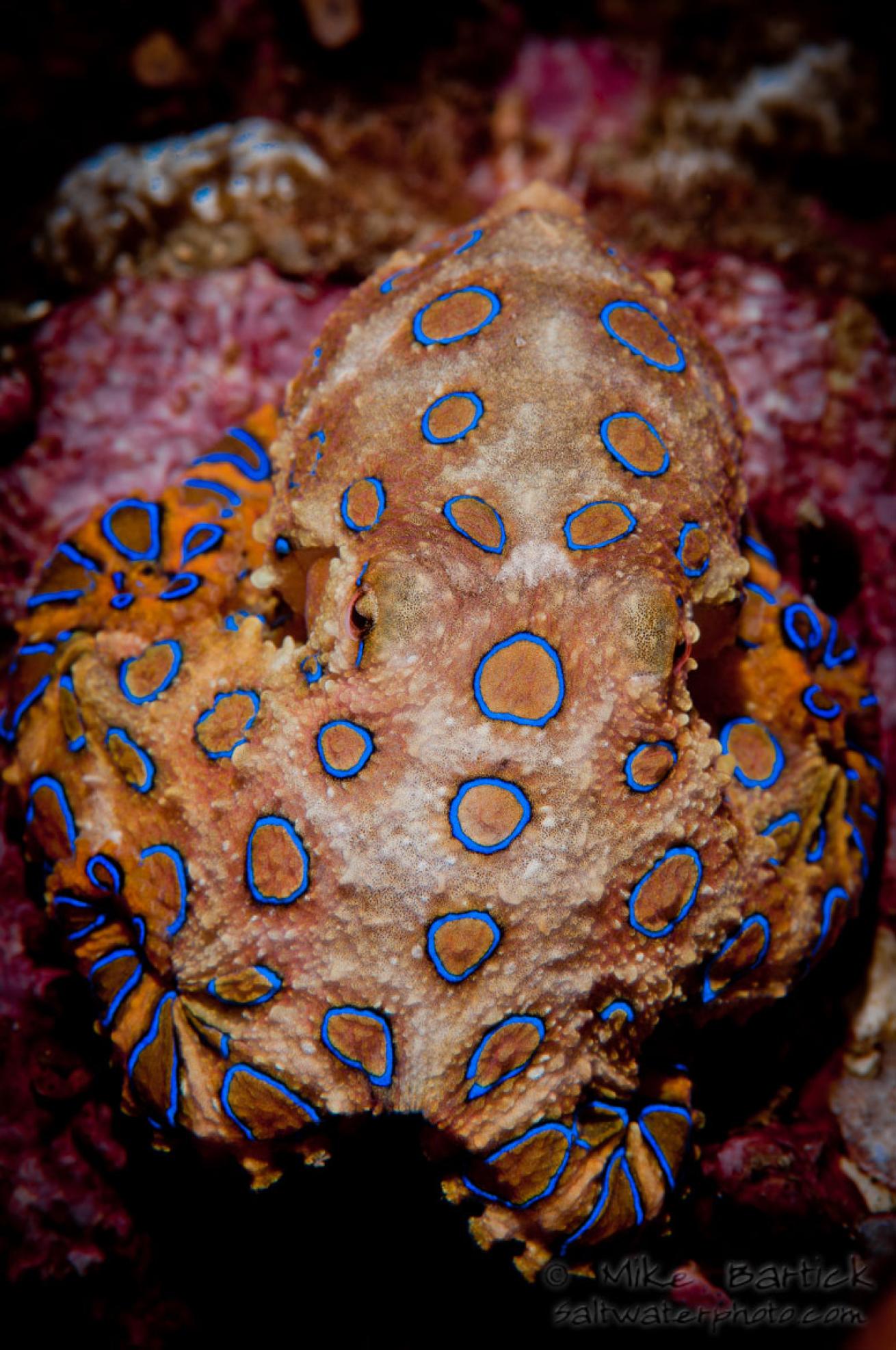
"This lovely golf ball-sized octopus crept right at me in full regalia to warn me to choose my next moves very carefully. Then it slipped under the ledge and into a tiny hole," says Mike Bartick.
Fact: An octopus can squeeze through any sized opening as long as it can fit its beak through it.
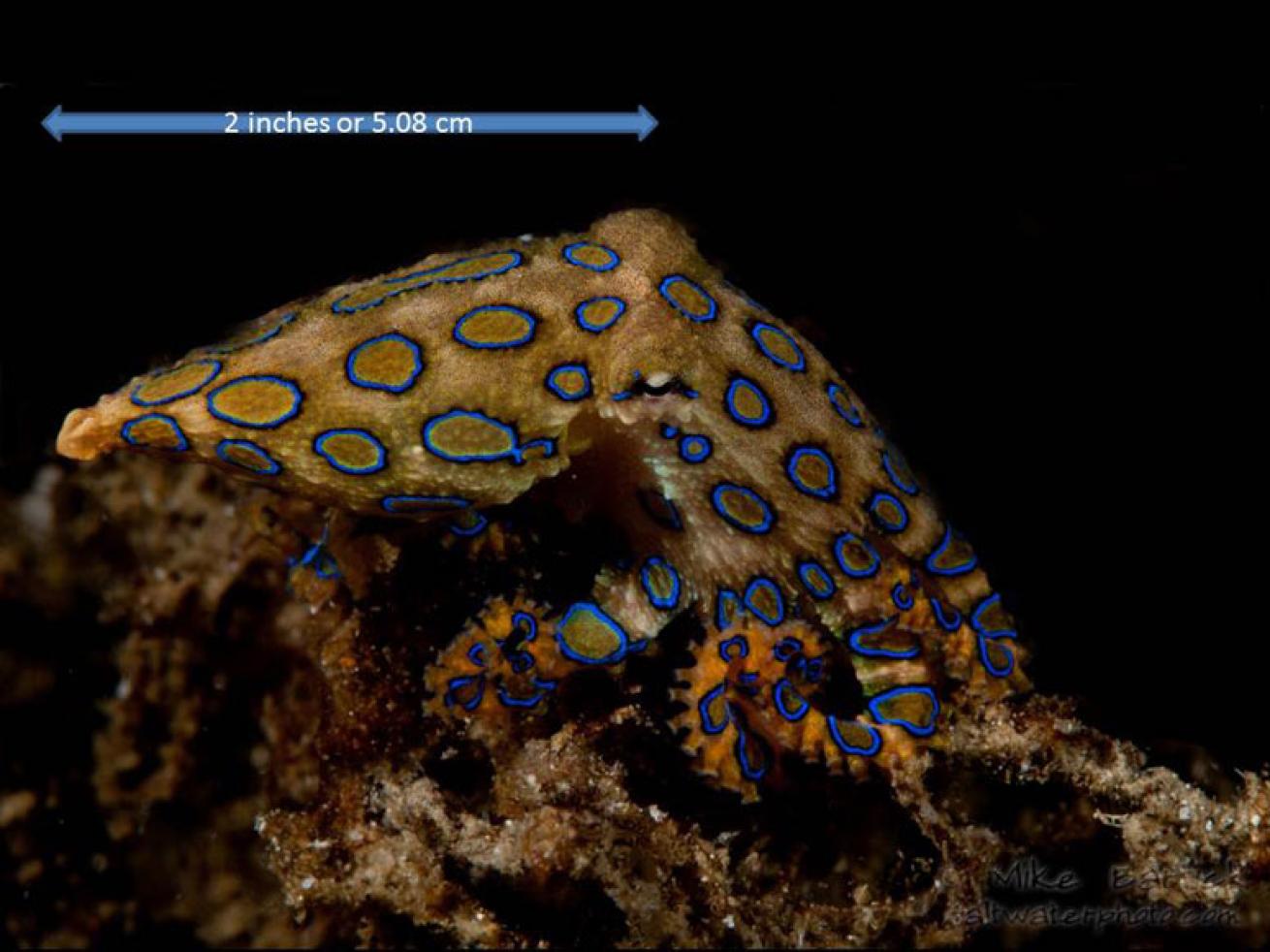
Blue Rings or “Bro” are considered small in size (octopuses are most accurately measured by the size of the head or mantle) and measure in at just a few inches or up to 12 cm. The beak, which is the only boney structure of any Octopus, is used to drill through the carapace of shrimp and clam shells.
Fact: All Octopus have 3 hearts

No larger than a man's thumb, this H matoti reaches out to explore the camera's lens port. Curiosity is a sure sign of intelligence and octopuses are the most intelligent inverts on earth.
Fact: Asking "What is this for?” is common amongst all beings; only a few ask “What can I use this for?”
Octopus are always looking for things to use, for a den, to play with etc.

While hunting, the H. matoti becomes a stunning brown and creme color and the ocellated blue ring under its eyes becomes vibrant. This one is hunting for small crustaceans under this log on a night dive.
Fact: Cephalopods become brown and white to signal that they are willing to mate. Unlike the Matoti that flashes these in a disruptive manner.
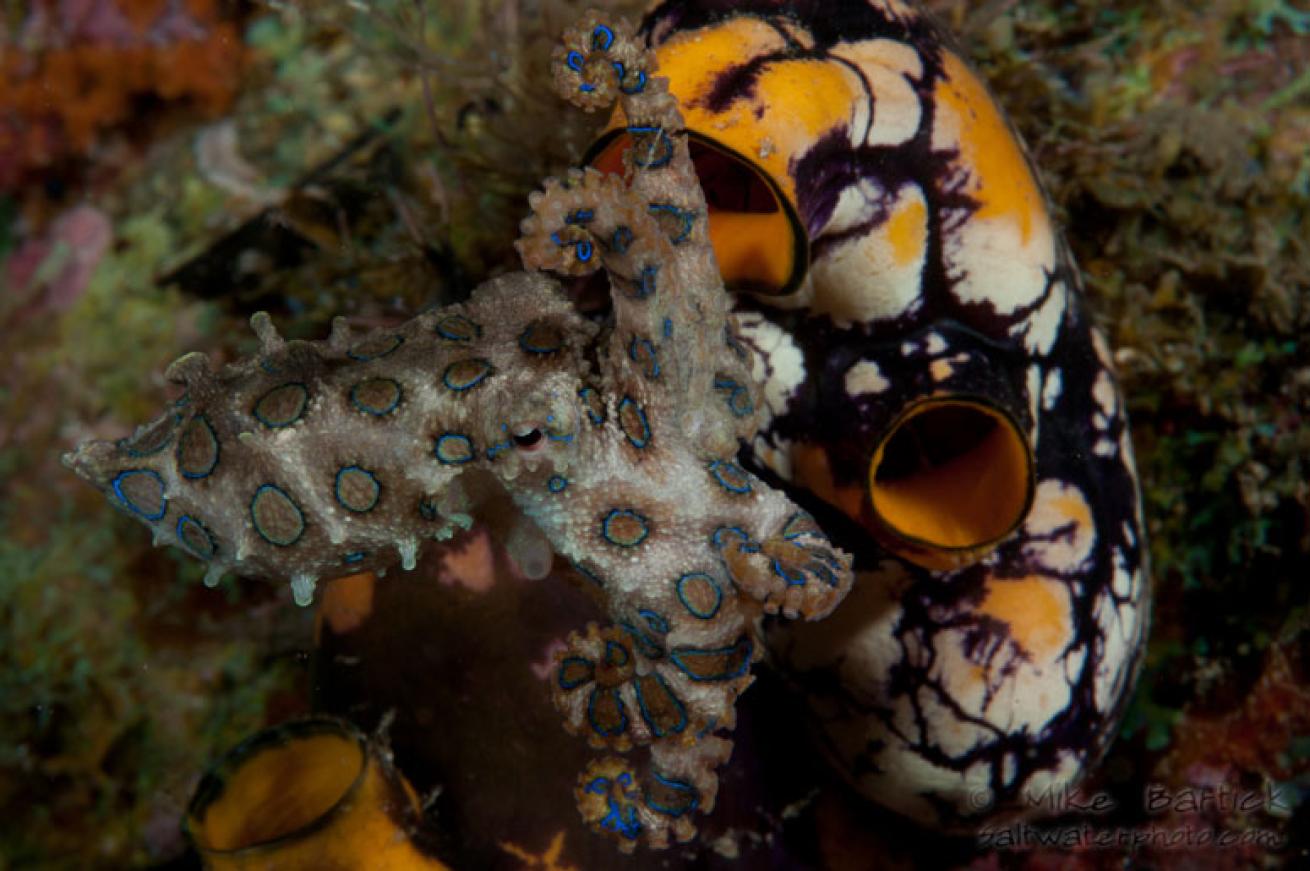
A H. lunalata like this can hunt during the day or at night.
Fact: A creature this small is capable of taking down something 100 times its size.
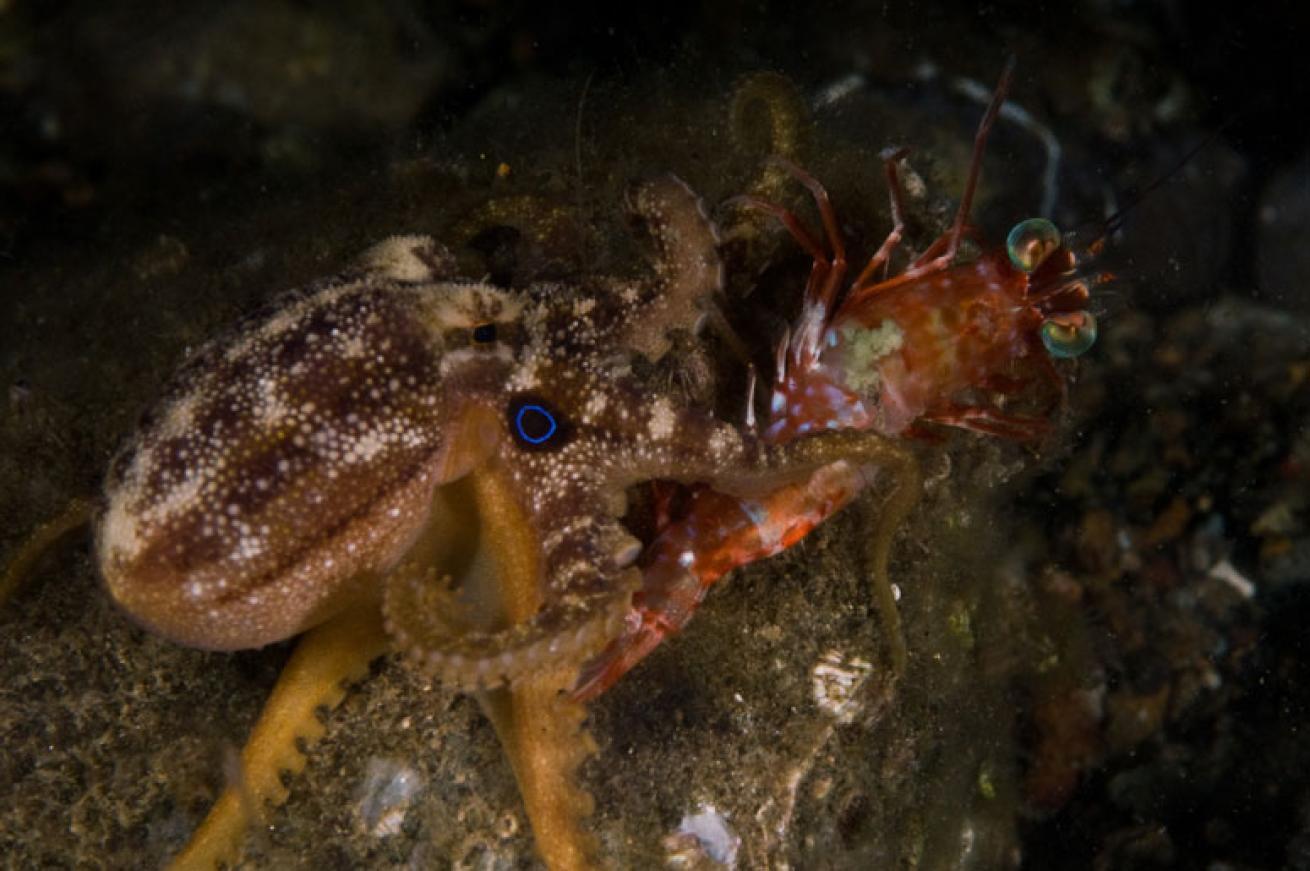
Like other cephalopods, Blue Rings are nomadic carnivores that share its habitat with other cephalopods peacefully.
This H.matoti delivers a lethal bite then holds its victim away from itself avoiding injury. A secondary enzyme within the saliva begins to break down the flesh of its victim allowing the octopus to suck out the remains, leaving the shell fully intact and empty.
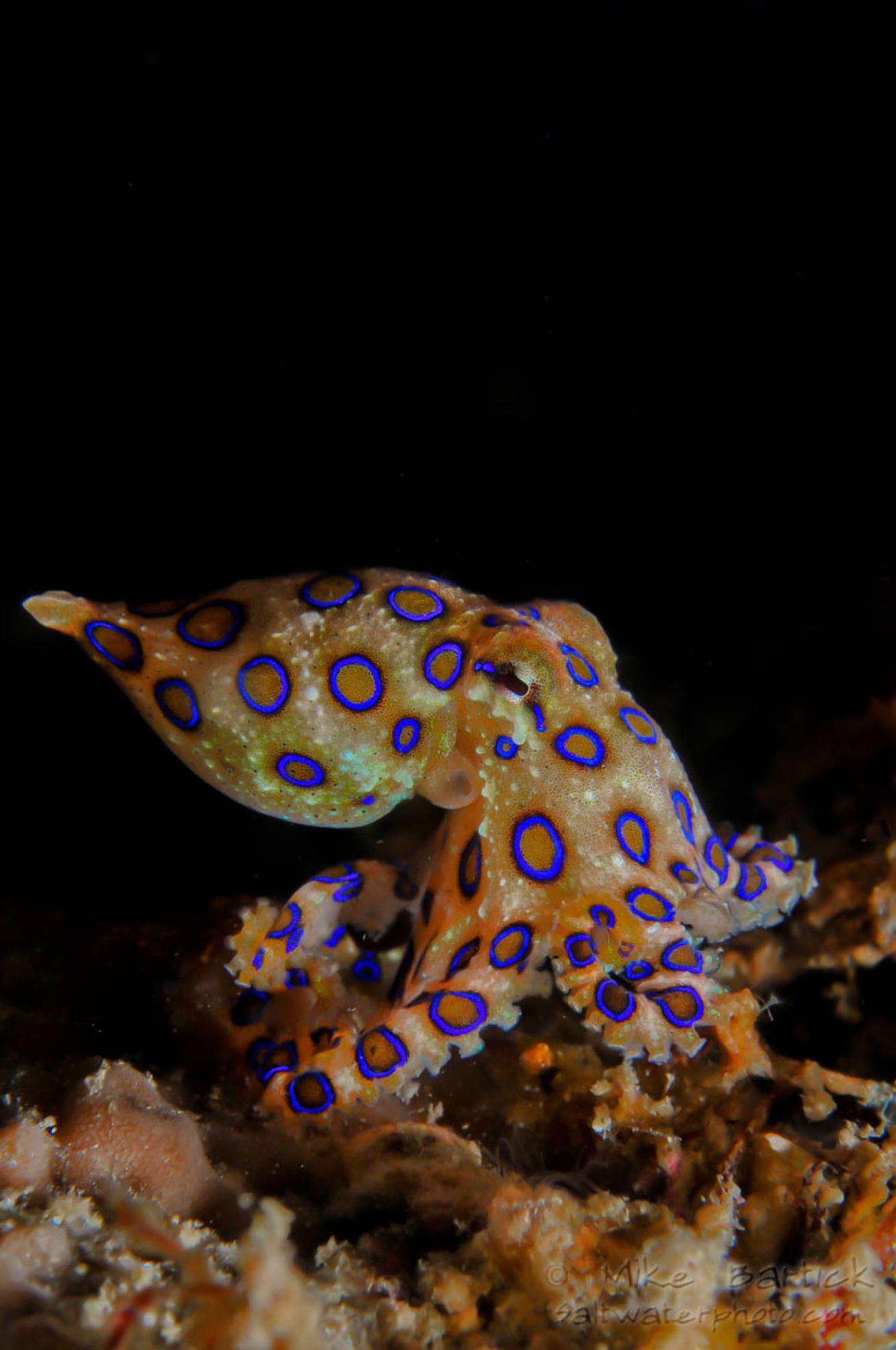
At first glance many of the blue ring octopuses look very similar with the exception of the H. matoti. The Greater (H. lunulata ) has a line through the eye and slightly larger rings. They all contain TTX and are very photogenic.
Fact: Not all Blue Rings have an ink sac
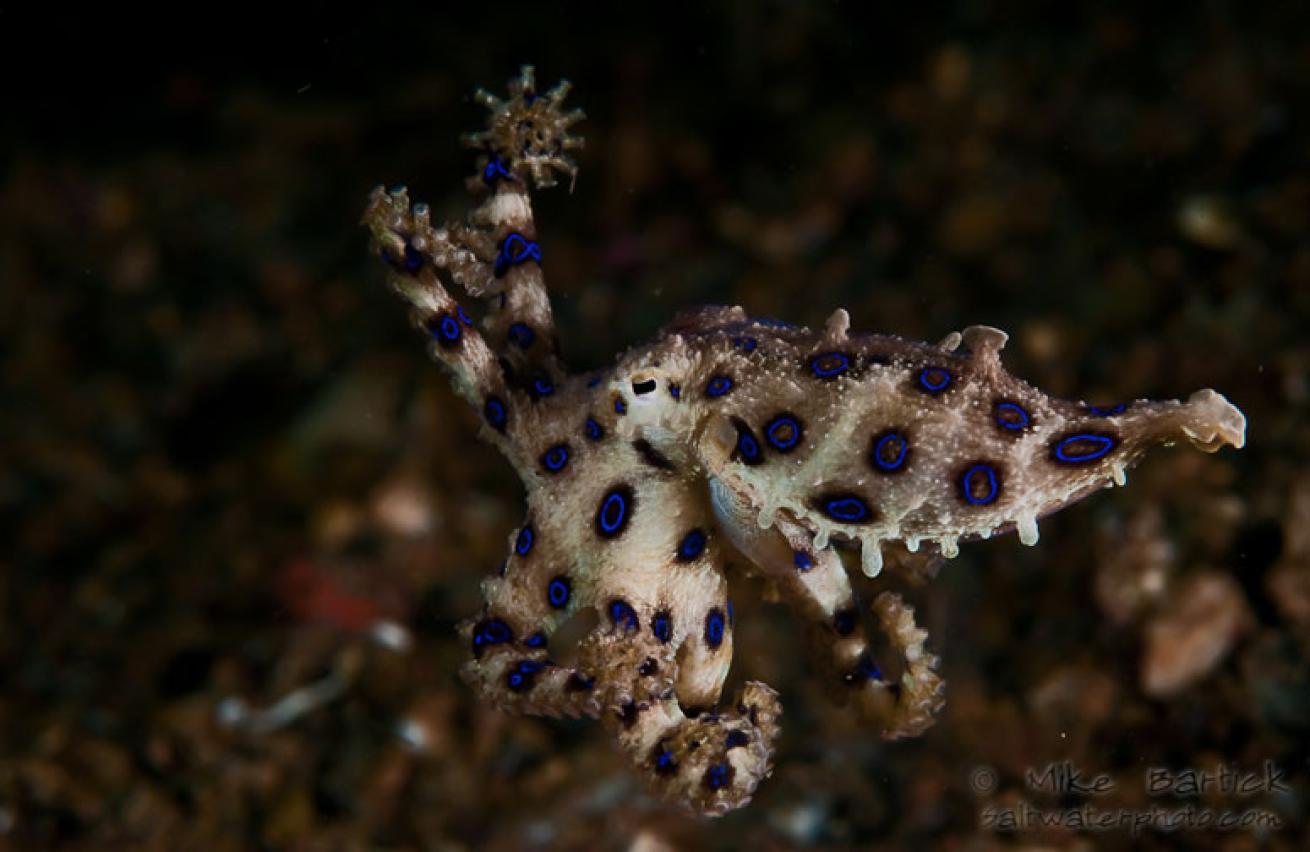
The Midring (Hapalachlaena sp.4) has smaller sized rings along the mantle and arms and are lacking the small line through the eye. The difference is subtle but enough to tell them apart. Each are relatively the same size and can be found on walls and sand at a wide range of depths. Basically, the blue rings can and do roam wherever they want …
Fact: This octopus is a new addition found in the Anilao area of the Philippines. The count is now at 3 species of Hapalachlaena for the immediate area
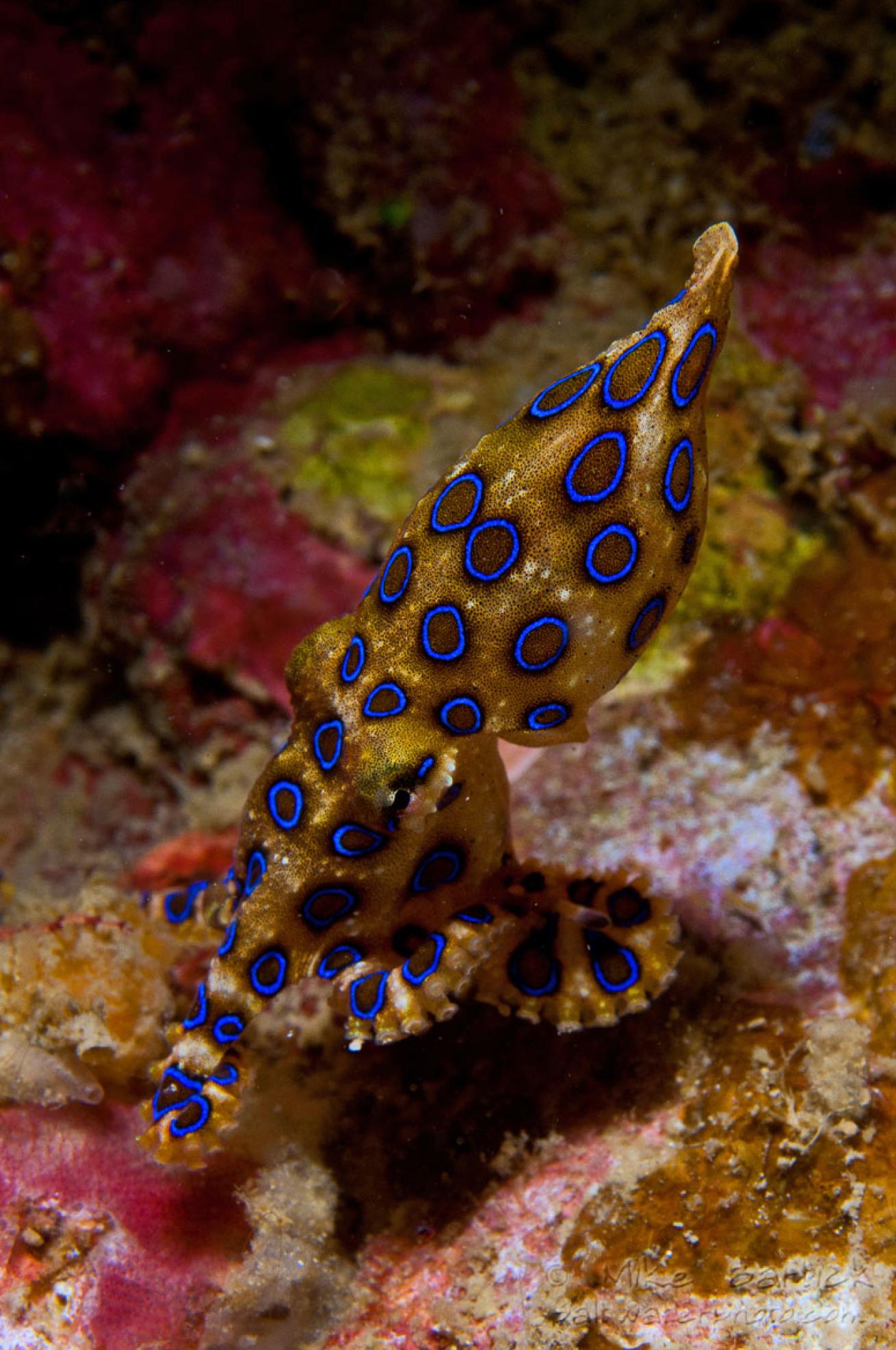
"When I see a blue ring flush to a gold like this I know its time to leave them alone," says Mike Bartick.
When a blue ring octopus is resting it rarely flashes the blue rings but when it is startled, or hunting, it's quite common. You don’t need to harass them to make them become colorful either. Like all octopuses, they can easily shift colorations with patience.
Fact: All octopuses can also change their tactile features and coloration in whats known as “the passing cloud”. As it moves through its environment an octopus calculates how to rapidly disguise itself for predation or protection.
Fear is human nature, and the mere mention of the word shark can raise more than just the hair on a diver’s arm. Misguided information, movies, media hype and lack of understanding have demonized more than just sharks in our oceans often portraying these hapless creatures as sea monsters. As divers, we’re entering an environment that we have little knowledge or control over and realize that we aren’t the apex predator anymore. Sea creatures have developed and evolved advanced methods for hunting and surviving in the harshest environment on earth and man is an extreme latecomer to this party, so why are we so arrogant? Its human nature …
The Blue Ringed octopus is recognized as the world’s most venomous cephalopod__ to date, however _in spite of its deadly capabilities the Blue Ring is timid and photogenic and most certainly shouldn’t be killed or demonized. Described under the genus of _Hapalachlaena, it is speculated that there are at least 10 (not four) known species that prefer warmer water and range from Southern Japan through the Indo-pacific, South Pacific, Indian Oceans and South Australia where they were originally discovered. Found in a variety of habitats that include shallow tide pools where these Blue Rings have come into contact with humans and unsuspecting tide poolers. Very few deaths have been attributed to the blue rings; its bite victims are still counted in the single digits since their recorded discovery in 1929.
Unlike other venomous creatures that produce their own toxins, the Blue Ring does not in a sense produce its own venom. The venom is actually its saliva, the neurotoxin TTX is produced as a symbiotic byproduct of a bacteria hosted in the salivary glands and handed down through the eggs from one generation to the next. The deadly toxin is delivered through a bite or a scratch from the beak and transmitted through venomous saliva. Any contact with the skin tissue of the Blue Ring is also enough to trigger a reaction that could result in a rapid descent into paralysis and death.
What is TTX or Tetrodotoxin? TTX is a deadly neurotoxin 100 times stronger than potassium cyanide. A measured dose of .00002 oz or .5 mg is enough to kill a fully-grown human up to 165lbs.
How does TTX work? TTX works by blocking the sodium channels of its victim’s contractile muscles, disabling the victim’s ability to contract their muscles voluntarily. The worst part: The involuntary muscles like the heart continue to function, condemning its victim to experience every effect of the venom as it is pumped through their body. Each blue ring octopus contains an unknown quantity of venom.
In addition to the Blue Ring octopus, TTX is also found in a variety of other organisms such as puffer fish (where the deadly neurotoxin gets its name), flatworms, salamanders, dart frogs, shadow gobys, crabs, flamboyant cuttlefish and even mola-molas.
_A word of warning: Extreme caution should be used while photographing the Blue Ring Octopus. Under NO circumstances should you or your guide handle one of them even with gloves, It is LIFE threatening. Longer lenses and a zoom lens are best used to capture behavior images and a good distance should always maintained. _



